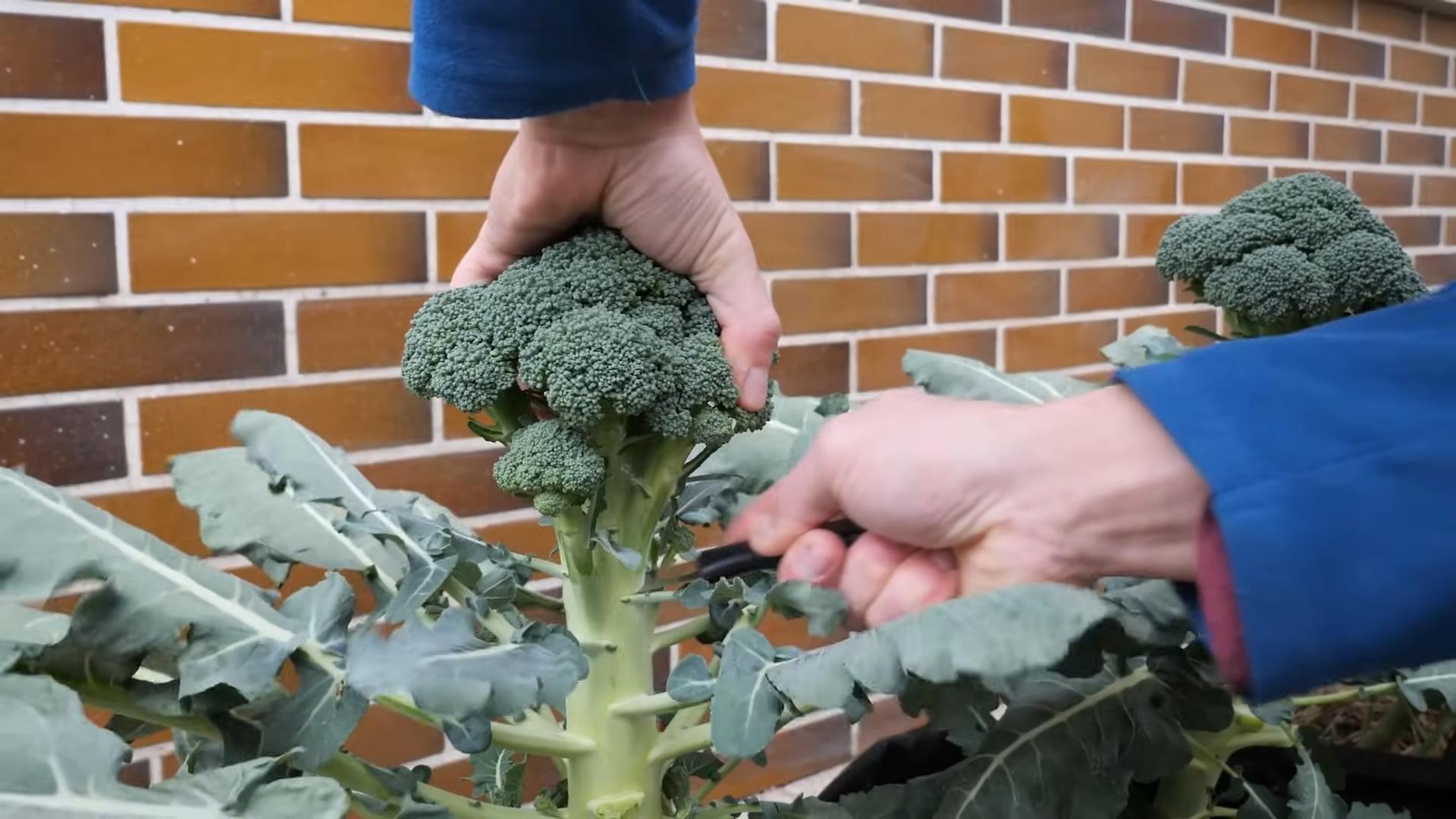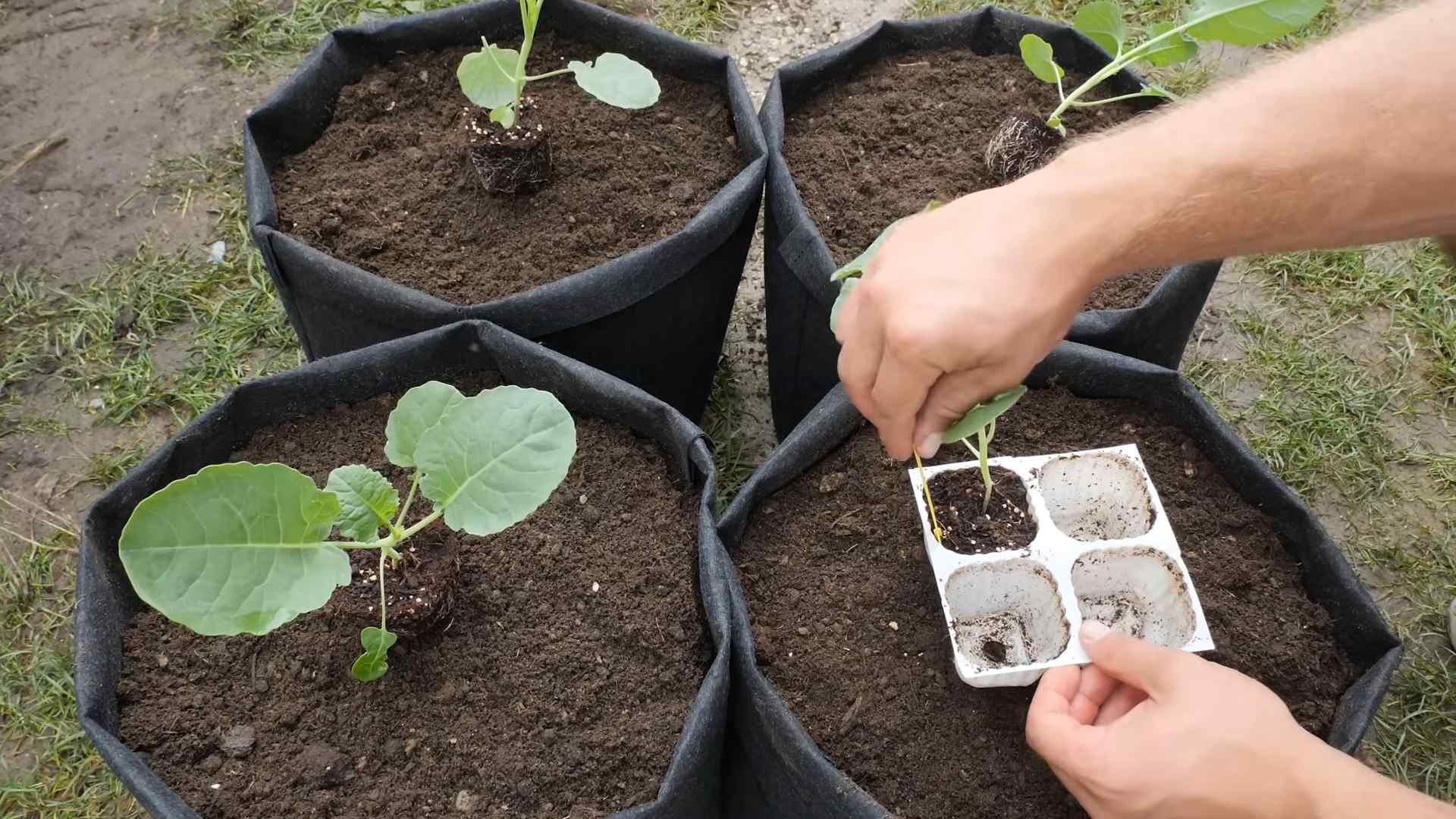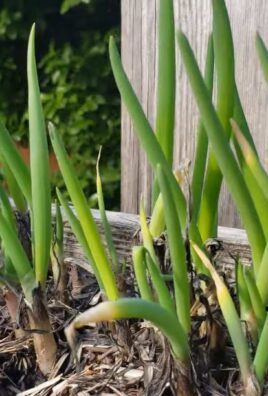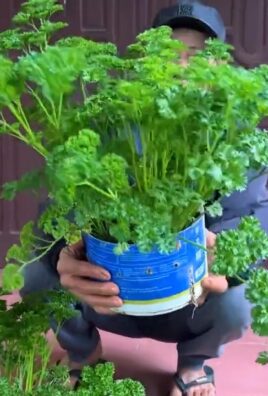Grow Broccoli in Pots
I’ve always loved the satisfying crunch of fresh broccoli, but finding consistently good quality at the supermarket can be a challenge. That’s why I started growing my own, and I’m thrilled to share my easy-to-follow guide on how to grow broccoli in pots! It’s a surprisingly simple process, even for beginner gardeners, and the reward of harvesting your own delicious, homegrown broccoli is incredibly satisfying.
Historically, broccoli, a member of the Brassica family, has a rich history dating back to ancient times. While its exact origins are debated, evidence suggests cultivation in the Mediterranean region centuries ago. Today, it’s a global favorite, but the convenience of growing your own broccoli in pots offers a unique connection to this historical vegetable.
Why should you try growing broccoli in pots? Well, for starters, it’s incredibly space-saving! Perfect for apartment dwellers or anyone with limited garden space, growing broccoli in pots allows you to enjoy fresh, flavorful broccoli even without a large yard. You also have greater control over the growing environment, protecting your plants from pests and ensuring optimal growing conditions. Plus, there’s something truly special about knowing exactly where your food comes from and how it was grown.
In this article, I’ll walk you through everything you need to know, from choosing the right pot and soil to harvesting your bountiful crop. Get ready to experience the joy of homegrown broccoli – it’s easier than you think!

Growing Broccoli in Pots: A Step-by-Step Guide
I love the taste of fresh broccoli, and nothing beats homegrown veggies! Growing broccoli in pots is surprisingly easy, even for beginners. Here’s how I do it, and how you can too!
Choosing Your Pots and Soil
- Pot Size: Broccoli needs space to develop its large head, so aim for pots at least 12 inches in diameter and 12 inches deep. Larger is always better! I usually use 15-inch pots for optimal results.
- Pot Material: Terracotta, plastic, or even fabric pots will work. Just make sure they have drainage holes to prevent soggy soil, which broccoli hates.
- Soil Selection: Use a well-draining potting mix, not garden soil. Garden soil is often too heavy and can compact, hindering root growth. Look for a mix specifically designed for vegetables, or amend a standard potting mix with perlite or vermiculite to improve drainage. I like to add a bit of compost for extra nutrients.
Starting Your Broccoli Seeds (or Seedlings)
- Starting from Seed (Indoors): Begin sowing broccoli seeds indoors 6-8 weeks before the last expected frost in your area. I sow my seeds about ¼ inch deep in seed-starting trays filled with the same well-draining potting mix I use for my pots. Keep the soil consistently moist but not waterlogged. A humidity dome can help maintain moisture levels.
- Germination: Broccoli seeds usually germinate within 7-10 days at temperatures around 70°F (21°C). Once they sprout, provide plenty of sunlight. A sunny windowsill or grow lights are ideal.
- Hardening Off: Before transplanting your seedlings into their pots, gradually acclimate them to outdoor conditions. This process, called hardening off, helps them adjust to the sun, wind, and temperature fluctuations. Start by placing them outdoors for a few hours each day, gradually increasing the time over a week.
- Starting from Seedlings (Direct Sowing): You can also buy broccoli seedlings from a garden center. Choose healthy, vigorous plants with dark green leaves and no signs of disease.
Transplanting Your Broccoli
- Prepare the Pots: Fill your chosen pots with the prepared potting mix, leaving about an inch of space from the rim. Gently water the soil to settle it.
- Planting: Carefully remove your seedlings from their seed trays or containers, being mindful not to damage the roots. Plant them at the same depth they were growing in their previous containers. Space multiple plants according to the variety’s instructions; usually, one plant per 12-inch pot is sufficient.
- Watering: Water thoroughly after transplanting to settle the soil around the roots. Avoid overwatering, as this can lead to root rot.
Ongoing Care and Maintenance
- Sunlight: Broccoli needs at least 6-8 hours of direct sunlight per day. Choose a sunny location for your pots.
- Watering: Keep the soil consistently moist but not soggy. Water deeply and regularly, especially during dry periods. Check the soil moisture by sticking your finger a couple of inches into the soil; if it feels dry, it’s time to water.
- Fertilizing: Feed your broccoli plants every 2-3 weeks with a balanced liquid fertilizer diluted to half strength. Follow the instructions on the fertilizer packaging. Over-fertilizing can lead to excessive leaf growth at the expense of head development.
- Pest and Disease Control: Regularly inspect your plants for pests like aphids or caterpillars. Handpick any pests you find, or use an insecticidal soap if necessary. Good air circulation can help prevent fungal diseases.
- Side Shoots: Once the main head is harvested, smaller side shoots will develop. These can also be harvested for a second crop. Pinch off the flower buds before they open to encourage more side shoot growth.
Harvesting Your Broccoli
- Harvest Time: Broccoli heads are ready for harvest when they are firm, dark green, and tightly closed. This usually takes around 70-80 days from transplanting, depending on the variety.
- Harvesting Technique: Use a sharp knife or pruning shears to cut the head, leaving about an inch of stem attached to the plant. Harvesting the heads early will result in a more tender product. If you wait too long, the heads will become tough and woody.
Troubleshooting Common Problems
Yellowing Leaves:
Yellowing leaves can indicate several issues, including nutrient deficiencies, overwatering, or underwatering. Check your watering schedule and consider adding a balanced fertilizer.
Small Heads:
Small heads can result from insufficient sunlight, poor soil drainage, or overcrowding. Ensure your plants receive adequate sunlight and have enough space to grow.
Pests:
Regularly inspect your plants for pests and take appropriate action as soon as you notice any infestation. Handpicking, insecticidal soap, or introducing beneficial insects can help control pest populations.
Bolting:
Bolting (premature flowering) can occur if the plants experience stress from heat or drought. Choose a broccoli variety suited to your climate and provide consistent watering.
Choosing the Right Broccoli Variety
Different broccoli varieties have different growth habits and maturity times. Choose a variety that is well-suited to your climate and growing season. Some varieties are more heat-tolerant than others, which is important to consider if you live in a warmer climate.
With a little care and attention, you’ll be enjoying delicious, homegrown broccoli in no time! Happy gardening!

Conclusion
So there you have it! Growing your own broccoli in pots is a surprisingly rewarding and accessible gardening project, even for beginners. This DIY trick offers a fantastic way to enjoy fresh, flavorful broccoli throughout the growing season, bypassing the sometimes unpredictable nature of garden beds and ensuring a consistent harvest. The convenience of container gardening, coupled with the delicious results, makes this method a must-try for anyone with even a small balcony or patio. You’ll be amazed at the quality and taste difference between homegrown broccoli and store-bought varieties. The satisfaction of nurturing a plant from seed to harvest is unparalleled, and the fresh broccoli you’ll enjoy will be a testament to your green thumb. Beyond the simple satisfaction, growing your own broccoli contributes to a more sustainable lifestyle, reducing your carbon footprint and allowing you to control the pesticides and fertilizers used in your food production.
Beyond the basic method outlined, there are numerous ways to customize your broccoli-growing experience. Experiment with different pot sizes and materials – terracotta pots offer excellent drainage, while larger containers provide more space for root development. Consider using a high-quality potting mix specifically formulated for vegetables to ensure optimal nutrient availability. You can also explore different broccoli varieties; some are better suited for container growing than others. Look for compact varieties that are less prone to flopping over. Furthermore, you can extend your harvest by staggering your plantings – sow seeds at two-week intervals to ensure a continuous supply of fresh broccoli throughout the growing season. Don’t be afraid to experiment with companion planting; certain herbs and flowers can deter pests and improve the overall health of your broccoli plants. Finally, remember that consistent watering and fertilization are key to success. Monitor your plants closely and adjust your watering schedule based on weather conditions.
We strongly encourage you to try this simple yet effective method of growing broccoli in pots. It’s a fantastic way to connect with nature, enjoy fresh, healthy food, and experience the satisfaction of growing your own produce. Share your experiences with us! We’d love to see pictures of your thriving broccoli plants and hear about your successes (and even your challenges – learning from mistakes is part of the process!). Post your photos and comments on our social media pages or leave a comment below. Let’s build a community of home gardeners who are passionate about growing their own food! Remember, even a small pot can yield a big harvest, and the journey of growing your own broccoli is as rewarding as the delicious results. So, grab some seeds, a pot, and get started on your own Grow Broccoli in Pots adventure today!
Frequently Asked Questions
What type of pot is best for growing broccoli?
While you can use almost any type of pot, those with good drainage are ideal. Terracotta pots are excellent choices because they allow for good air circulation and prevent waterlogging. Larger pots (at least 12 inches in diameter) are preferable to give the broccoli plant ample room for root development. Make sure the pot has drainage holes to prevent root rot.
What kind of soil is best for growing broccoli in pots?
Use a high-quality potting mix specifically formulated for vegetables. These mixes are typically well-draining and contain the necessary nutrients for healthy growth. Avoid using garden soil directly from your yard, as it may contain compacted soil, diseases, or pests that could harm your broccoli plants.
How much sunlight does broccoli need?
Broccoli requires at least 6-8 hours of direct sunlight per day. Choose a sunny location for your pots, ensuring they receive ample sunlight throughout the day. If you have limited sunlight, consider using grow lights to supplement natural sunlight, especially during the shorter days of fall and winter.
How often should I water my broccoli plants?
Water your broccoli plants regularly, keeping the soil consistently moist but not waterlogged. The frequency of watering will depend on factors such as weather conditions, pot size, and type of potting mix. Check the soil moisture regularly by sticking your finger a couple of inches into the soil. Water thoroughly when the top inch or two feels dry.
What are some common problems when growing broccoli in pots?
Common problems include pests (aphids, caterpillars), diseases (fungal diseases like downy mildew), and nutrient deficiencies. Regularly inspect your plants for signs of pests or diseases. Use organic pest control methods if necessary, and ensure your plants receive adequate nutrients through fertilization. Proper watering is crucial to prevent many problems.
When can I harvest my broccoli?
Broccoli heads are typically ready for harvest when they are firm and dark green, usually about 60-70 days after planting. Harvest the heads by cutting them with a sharp knife, leaving about an inch of stem attached. You may get a second or even third harvest from the same plant, depending on the variety and growing conditions.
Can I grow broccoli in pots year-round?
In warmer climates, you may be able to grow broccoli year-round with proper planning and care. In colder climates, you’ll likely need to start seeds indoors and transplant them outdoors once the danger of frost has passed. You can also extend the growing season by using a greenhouse or grow lights.
What are some companion plants for broccoli?
Good companion plants for broccoli include herbs like chamomile, dill, and rosemary. These plants can help deter pests and improve the overall health of your broccoli plants. Avoid planting broccoli near cabbage family members, as they can share the same pests and diseases.




Leave a Comment